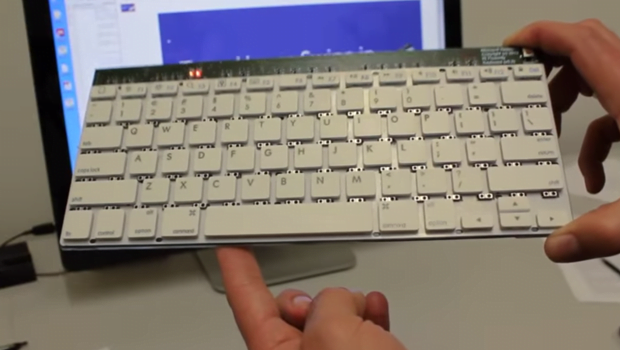MS Research’s R&D team has demonstrated a prototype keyboard that not only allows you to type normally, but also can track your hands for gesture support.
The system uses an array of infrared sensors placed between the keys and enables what Microsoft calls “high frame rate natural motion data”. Basically, the resolution of the data is quite low, but it is captured at 300 Hz, which allows the keyboard to track your hand well.
The keyboard is thin and compact, and according to the video, the additional hardware doesn’t seem to have had much of an impact on the design at all. It looks a bit like a slightly larger version of Microsoft’s own wedge keyboard.
In many ways this seems like a more sensible take on the Leap Motion controller, which was a good idea but didn’t execute brilliantly. Here, Microsoft seems to have limited itself to a set of gestures similar to what you might use with a trackpad. However, the keyboard can recognize both moving gestures, like pinch-to-zoom, and static gestures, where forming an O with your thumb and forefinger over the keyboard starts a search.
Microsoft even says it can isolate enough information to track your fingertip accurately enough for the keyboard to know what you’re typing.
(YouTube)Y3dUeGNIX4M(/YouTube)
At the moment it seems like the hardware needs to expose the IR sensors and on the keyboard’s surface, resulting in a sub-optimal typing experience. Presumably, the sensors could be hidden in the keys themselves in the future. When something like this happens, gesture controls will surely take off.
Continue reading: Microsoft Surface 2 in review

